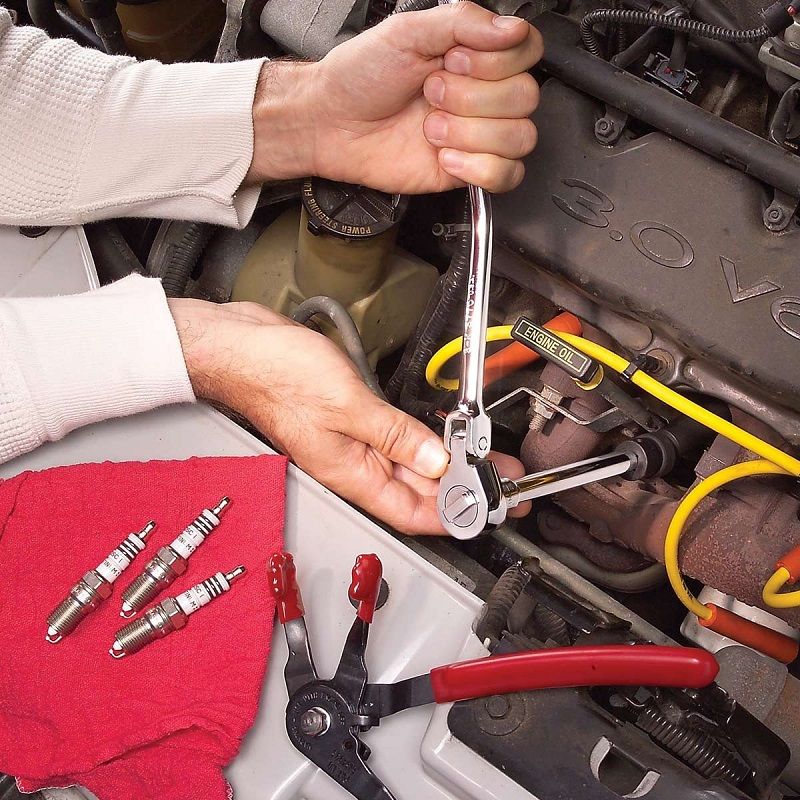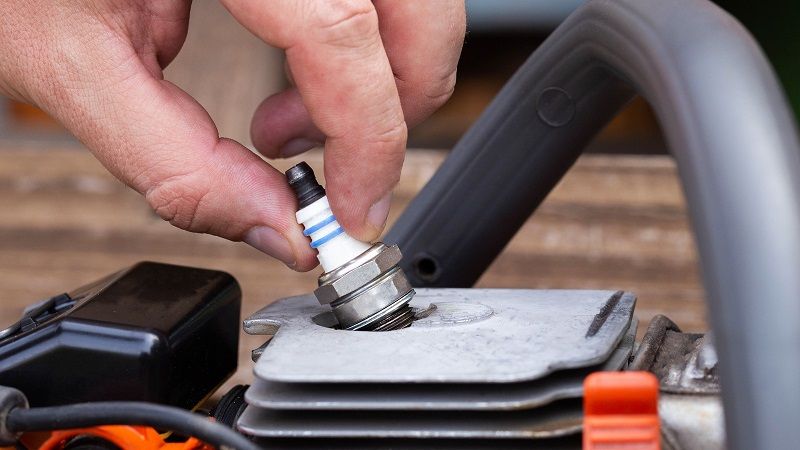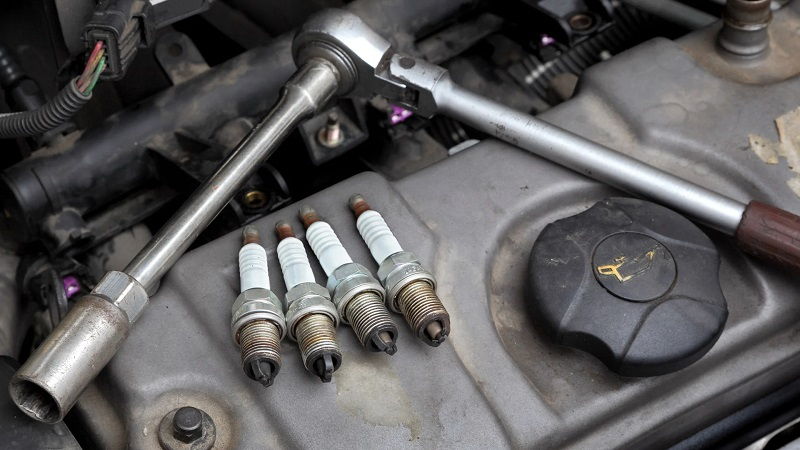This post contains affiliate links. This means I will make a commission at no extra cost to you should you click through and make a purchase [ “As an Amazon Associate, I earn from qualifying purchases.” ]. Read the full disclosure here.
Removing Spark Plugs GuideMechanic.Com Spark plugs are a crucial component of an internal combustion engine, responsible for igniting the air-fuel mixture that drives your vehicle.
Over time, these small but mighty parts can become worn out or fouled, leading to diminished performance and fuel efficiency.
To ensure your engine runs smoothly, it is essential to know how to properly remove and replace spark plugs.
See Also: 2014 Honda Accord Spark Plugs
In this article, we will provide you with a detailed and comprehensive guide on removing spark plugs, helping you maintain your vehicle’s optimal performance.
Understanding the Basics of Spark Plugs

Before diving into the removal process, it is essential to have a basic understanding of how spark plugs work, their lifespan, and the signs of potential issues.
How do Spark Plugs Work?
Spark plugs play a vital role in the combustion process of an engine. When the piston compresses the air-fuel mixture in the combustion chamber, the spark plug produces an electric spark that ignites the mixture, creating an explosion that powers the engine. This continuous process enables your vehicle to run.
Spark Plug Lifespan
Spark plug lifespan can vary depending on factors such as the type of spark plug and driving conditions. Generally, spark plugs have a recommended mileage interval for replacement, typically between 30,000 to 100,000 miles. However, it is crucial to consult your vehicle’s manual for specific recommendations.
Signs of Potential Spark Plug Issues
As spark plugs age or become fouled, several signs may indicate potential issues. These include rough idling, engine misfires, decreased fuel efficiency, difficulty starting the engine, and a lack of power during acceleration. If you notice any of these symptoms, it may be time to remove and inspect your spark plugs.
Gathering the Necessary Tools
To efficiently remove spark plugs, you will need specific tools. This section will outline the essential tools you should have on hand and explain their role in the removal process.
Basic Tools for Spark Plug Removal
Before starting the removal process, gather the following tools:
- A spark plug socket wrench
- A spark plug socket extension
- A ratchet or a wrench
- A spark plug gap gauge
- A wire brush or a spark plug cleaner
- Dielectric grease (optional)
The Role of Each Tool
The spark plug socket wrench is specifically designed to fit over the spark plugs, allowing for easy removal and installation. The extension is used to reach spark plugs that may be located deep within the engine.
See Also: Spark Plug Cap Replacement
The ratchet or wrench provides the necessary torque to loosen and tighten the spark plugs. The spark plug gap gauge ensures the proper gap distance for optimal performance.
The wire brush or spark plug cleaner is used for cleaning the spark plugs, and dielectric grease can be applied to the spark plug boots to aid in future removal.
Preparing the Engine for Spark Plug Removal
This section will guide you through necessary preparation steps, such as locating the spark plugs, ensuring the engine is cool, and disconnecting the battery to ensure a safe removal process.
Locating the Spark Plugs
The exact location of the spark plugs can vary depending on the engine configuration and vehicle make and model.
Common locations include the top of the engine cylinder head or along the sides. Consult your vehicle’s manual or online resources to determine the specific location of your spark plugs.
Allow the Engine to Cool
Before attempting to remove spark plugs, it is crucial to let the engine cool down completely. Hot engine components can cause burns and potential damage. Waiting at least an hour after the engine has been turned off is recommended.
Disconnecting the Battery
As an added safety measure, it is advisable to disconnect the negative terminal of the battery before removing spark plugs.
This prevents accidental electrical discharge and reduces the risk of injury or damage to the vehicle’s electrical system. Use a wrench to loosen the terminal and carefully remove it from the battery.
Step-by-Step Guide to Removing Spark Plugs
Here, we will provide you with a detailed step-by-step guide on how to remove spark plugs, including tips to avoid common mistakes and potential challenges you may encounter.
Step 1: Remove the Spark Plug Wire Boot
Start by grasping the spark plug wire boot firmly and gently twist it back and forth while pulling it away from the spark plug. Avoid pulling on the wire itself, as it may cause damage. Repeat this process for each spark plug wire.
Step 2: Clean the Spark Plug Area
Before removing the spark plugs, use a soft brush or compressed air to clean the area around each plug. This prevents dirt or debris from falling into the cylinder when the plug is removed.
Step 3: Loosen the Spark Plugs
Attach the spark plug socket to the wrench or ratchet, then place it over the first spark plug. Apply firm but controlled counterclockwise pressure to loosen the plug. Be cautious not to apply excessive force to avoid damaging the spark plug or the engine threads.
Step 4: Remove and Inspect the Spark Plugs
Once the spark plug is loose, carefully remove it from the engine using the socket and extension. Examine the spark plug for any signs of wear, fouling, or damage. Take note of any abnormalities as they may indicate potential engine issues.
Step 5: Repeat for the Remaining Spark Plugs
Follow the same procedure for the remaining spark plugs, one at a time. Take your time and ensure each plug is loosened and removed carefully.
Inspecting Spark Plugs for Signs of Wear or Damage

After removal, it is crucial to inspect the spark plugs for signs of wear, damage, or fouling. This section will explain what to look for and how to determine if replacement is necessary.
Signs of Normal Wear
Normal wear on a spark plug typically includes a light tan or grayish-brown color on the insulator tip. This indicates that the spark plug is operating correctly and the air-fuel mixture is properly ignited.
Signs of Fouling
Fouling occurs when deposits build upon the spark plug, hindering its performance. Signs of fouling include a black, oily, or sooty appearance on the insulator tip. Fouling can be caused by factors such as oil leaks, rich fuel mixture, or excessive idling.
Signs of Damage
Inspect the spark plugs for any signs of physical damage, such as cracks, chips, or bent electrodes. Damaged spark plugs should be replaced to ensure proper engine function.
Cleaning or Replacing Spark Plugs
Depending on the condition of the removed spark plugs, this section will guide you through the decision-making process of either cleaning and reusing the plugs or opting for replacement.
Cleaning Spark Plugs
If the spark plugs show signs of fouling but are still in good condition, they can be cleaned to restore their performance.
See Also: Troy Bilt Spark Plug Size
Use a wire brush or spark plug cleaner to gently remove any deposits or carbon buildup on the insulator tip. Be cautious not to damage the electrodes or the insulator during the cleaning process.
Replacing Spark Plugs
If the spark plugs exhibit severe wear, damage, or are beyond cleaning, it is best to replace them with new ones. Consult your vehicle’s manual or an automotive specialist to determine the appropriate spark plug type and gap for your specific engine.
Properly Gapping Spark Plugs
To ensure optimal performance, it is crucial to properly gap your spark plugs before installation. This section will explain what spark plug gap is and guide you through the gap measurement and adjustment process.
Understanding Spark Plug Gap
The spark plug gap refers to the distance between the center and ground electrode. This gap affects the spark plug’s ability to ignite the air-fuel mixture effectively. Each vehicle has a specific recommended gap measurement, which can be found in the vehicle manual or by consulting a reputable source.
Measuring and Adjusting the Gap
Using a spark plug gap gauge, gently insert the correct size blade into the gap between the electrodes. If the gap is too narrow, carefully bend the ground electrode outwards to increase the gap.
If the gap is too wide, gently press the ground electrode against a solid surface to reduce the gap. Continuously check the gap with the gauge until the correct measurement is achieved.
Installing New or Cleaned Spark Plugs
Once you have decided on replacement or cleaning, this section will provide you with a step-by-step guide on how to properly install spark plugs, ensuring a secure fit and correct torque.
Step 1: Apply Anti-Seize Compound (Optional)
If recommended by the spark plug manufacturer or your vehicle’s manual, apply a small amount of anti-seize compound to the threadsof the spark plug. This helps prevent the spark plug from seizing or sticking in the engine and aids in future removal.
Step 2: Hand-Tighten the Spark Plug
Start by carefully threading the spark plug into the engine cylinder head by hand. Make sure the plug is aligned properly to avoid cross-threading. Gently tighten the spark plug using the spark plug socket and extension until it is snug.
Step 3: Torque the Spark Plug
Using a torque wrench or a spark plug socket wrench, tighten the spark plug to the recommended torque specified by the spark plug manufacturer or your vehicle’s manual. Over-tightening can lead to damage, while under-tightening can cause misfires or poor performance.
Step 4: Reattach the Spark Plug Wire Boot
Slide the spark plug wire boot over the installed spark plug until you feel it click or seat firmly. Give it a gentle tug to ensure it is securely attached to the spark plug.
Step 5: Repeat for the Remaining Spark Plugs
Follow the same process for each spark plug, ensuring proper alignment, hand-tightening, torque, and reattachment of the spark plug wire boot.
Reconnecting the Battery and Testing

After installation, it is important to reconnect the battery and test the engine to ensure everything is functioning correctly. This section will guide you through these final steps.
Reconnecting the Battery
Take the negative terminal of the battery that was previously disconnected and place it back onto the battery post. Use a wrench to tighten the terminal securely, ensuring a solid electrical connection.
Testing the Engine
Start the engine and listen for any abnormal sounds or vibrations. Let the engine idle for a few minutes and check for smooth operation.
See Also: Spark Plug 794 00055a
Accelerate gently and monitor the engine’s response. If everything sounds and feels normal, you have successfully completed the spark plug removal and installation process.
Maintenance Tips for Prolonged Spark Plug Lifespan
To extend the lifespan of your spark plugs, this section will provide you with valuable maintenance tips, including regular inspection, cleaning, and proper engine care.
Regular Inspection
Make it a habit to inspect your spark plugs at regular intervals, even if they are not showing any signs of issues. Regular inspection allows you to catch any potential problems early on and address them promptly.
Cleaning Routine
Clean your spark plugs whenever you notice signs of fouling or carbon buildup. Use a wire brush or a spark plug cleaner to gently remove deposits from the insulator tip. This helps maintain optimal spark plug performance.
Proper Engine Care
Take care of your engine by following the manufacturer’s recommended maintenance schedule. This includes regular oil changes, air filter replacements, and fuel system cleaning. A well-maintained engine leads to better combustion and less stress on the spark plugs.
Using Quality Fuel and Oil
Using high-quality fuel and oil can contribute to the longevity of your spark plugs. Quality fuel ensures a clean burn, reducing the risk of fouling, while proper oil lubrication keeps the engine running smoothly.
Avoiding Excessive Idling
Excessive idling can lead to spark plug fouling and carbon buildup. Whenever possible, avoid prolonged periods of idling and instead turn off the engine if you anticipate a long wait.
Consulting a Professional
If you’re unsure about any aspect of spark plug maintenance or encounter persistent issues, it is always best to consult a professional mechanic or automotive specialist. They can provide expert guidance and assistance tailored to your specific vehicle.
In conclusion, knowing how to remove spark plugs is an essential skill for any vehicle owner or enthusiast. By following this comprehensive guide, you can confidently maintain your vehicle’s optimal performance, improve fuel efficiency, and prevent potential engine issues.
Remember, regular spark plug maintenance is key to a smooth-running engine and a more enjoyable driving experience.
Related video of Removing Spark Plugs: A Comprehensive Guide to Efficient Maintenance
- P0000 Through P0099: Understanding OBD-II Trouble Codes - February 11, 2025
- P0000 Through P0199: Understanding OBD-II Trouble Codes - February 10, 2025
- P0080 Exhaust Valve Control Solenoid Circuit High (Bank 1) - February 9, 2025
